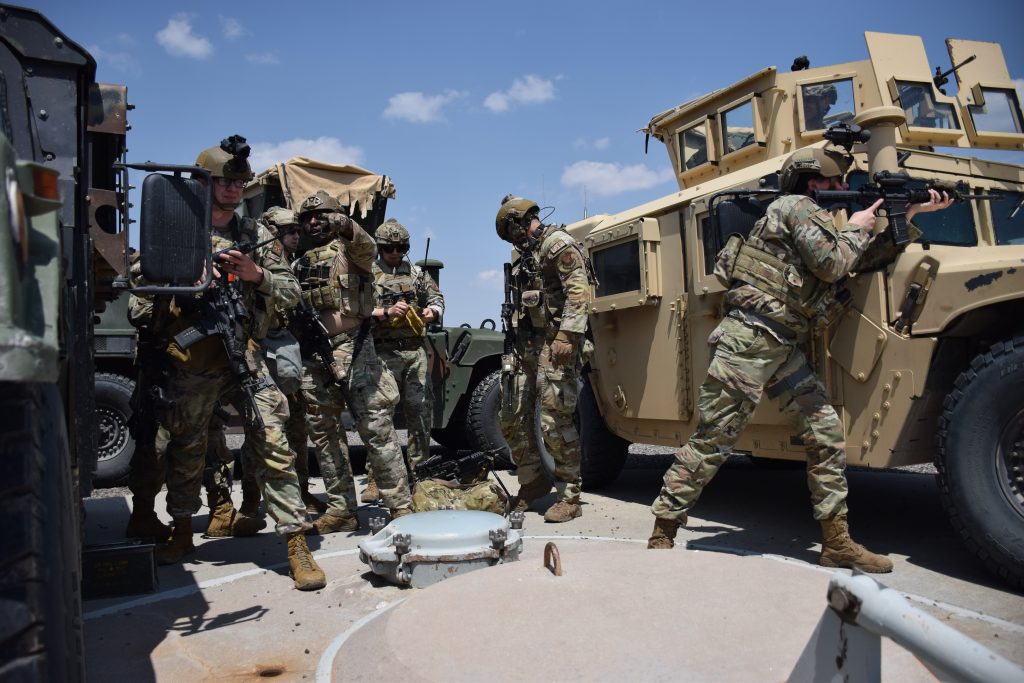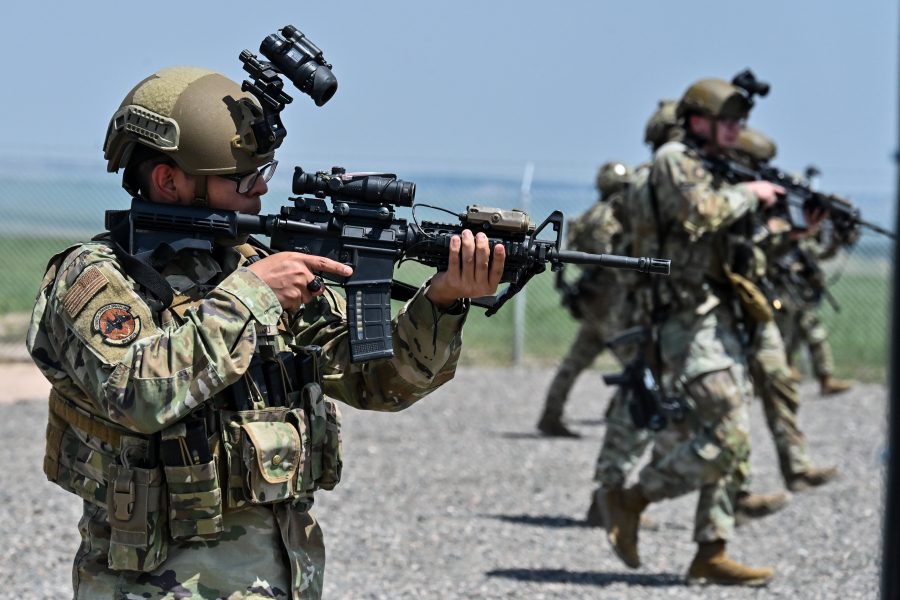Editor’s Note: This is the third of a three-part series on the future of how Air Force Security Forces will guard nuclear missile fields. Read Part 1, on the MH-139 Grey Wolf, by clicking here, and Part 2, on the Joint Light Tactical Vehicle and new Regional Operating Picture, by clicking here.
F.E. WARREN AIR FORCE BASE, Wyo.—As the Air Force prepares to stand up the LGM-35A Sentinel to replace the aging Minuteman III intercontinental ballistic missile, the security forces who guard them are already in the midst of sweeping updates meant to help them respond faster, hit harder, and stay better connected than ever before.
New systems like the MH-139A Grey Wolf helicopter, Joint Light Tactical Vehicle, and Regional Operating Picture communications network are all in the process of coming online. But the new ICBM itself and a flurry of new construction projects coming to nuclear bases like F.E. Warren will help tie those improvements together and make sure security forces Airmen have the training required to keep pace with future changes in threats and technology.
The incoming Sentinel features an open system architecture which should allow for easy upgrades as technology develops between now and 2075, the missile’s planned retirement date. It is also designed to be easier to maintain, which should minimize the security forces footprint required during maintenance time.
“Today you might be able to see us at a site doing maintenance based on what you can see from the roadside,” Col. Robert Ford, commander of the 90th Security Forces Group, told Air & Space Forces Magazine. “Tomorrow you may not be able to see us.”
The facilities where the missiles are housed should also be easier to defend. Today, an underground network of copper wires known as the Hardened Intersite Cable System (HICS) feeds signals back and forth between a missile squadron’s launch facilities and control centers. Airmen use those signals to monitor the missiles for maintenance issues or intrusions at a launch facility, but the old technology can handle only so much data. Over the next few years, F.E. Warren plans to replace HICS with a new network of fiber optic cables that should provide more data at a faster speed.
“You can push only so much data over copper lines before you just lose the information as it travels so far,” said Lt. Col. Eric Green, Air Force Global Strike Command Sentinel program integration officer. “Fiber optics will allow all that data to come back. We’re moving on from analog and going into digital technology.”

The network will hopefully promote better coordination across the missile fields. Today, each missile squadron controls its own launch facilities, but there is no connection between squadrons, said Lt. Col. Raymundo Vann, 90th Operations Group deputy commander. The upgrades will allow higher-level Airmen at the forthcoming Integrated Command Center to have a better sense of conditions out on the missile field.
“The upgrades will give us more interconnectivity and more operational oversight, which for us as operators is fantastic,” Vann said.
Green explained that missile maintainers will benefit by being able to identify problems earlier, while security forces Airmen could use the new tech to better assess possible threats.
“Right now if the alarm goes off, you virtually have to go out and inspect it, even if it’s a rabbit or a tumbleweed going through,” he said. “And now with the new systems they’re going to be able to get eyes on and say ‘nope, no response necessary.’”
As part of the switch to Sentinel, F.E. Warren will shrink its number of launch control centers from 15 to eight. Green said the remaining seven will support the new missiles, though how exactly is yet to be determined. F.E. Warren will modernize all 150 of its missile launch facilities, with the goal of having operational Sentinels on the base by the 2030s. The transition could be a difficult one. In June the Government Accountability Office wrote that the Sentinel program is about a year behind schedule, with initial operational capability expected between April and June 2030. The no-fail deadline required by U.S. Strategic Command is September 2030.
Even if Sentinel gets back on schedule, Ford predicted there will be some complexity for security forces Airmen as they protect both old missiles and new ones coming online. It will also take time to train everybody up on the new technology and facilities coming to the base, said Col. Deane Konowicz, vice commander of the 20th Air Force, which oversees the missile fields at F.E. Warren, Malmstrom Air Force Base, Mont., and Minot Air Force Base, N.D.
“The number one challenge to training anywhere in the nuclear enterprise is that we have the alert force: day-to-day we are our nation’s deterrent,” he said. “The mission has been continuous since 1963. There is no down day in the missile field, so how do you balance training with keeping that alert force safe, secure, reliable and ready?”
A new facility may make it easier to strike that balance. F.E. Warren will build an integrated training center complete with a mock launch facility where maintainers, defenders, cybersecurity specialists, and missileers can practice running and securing Sentinel without stepping on the toes of an operational facility.
“Today I have to coordinate with the maintenance group folks and the operations group folks, whereas tomorrow I’ll have that kind of facility here on the base that I can use,” said Ford.
Having begun its service as an Army cavalry post in 1867, F.E. Warren is no stranger to reinvention. The next few years will see another massive change as the base stands up 21st-century missiles, facilities, and platforms. But base officials warned that threats will continue to evolve, and so too must missile field security Airmen.
“The challenges don’t go away, they change, so we need a trained and efficient force that understands them,” Konowicz said.
The new construction projects at F.E. Warren are just a few elements of a suite of technologies and platforms that will make the missile defense enterprise even more deadly. Part 1 is about the MH-139 Grey Wolf. Part 2 covers the Joint Light Tactical Vehicle and Regional Operating Picture.
